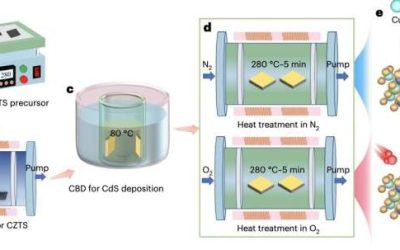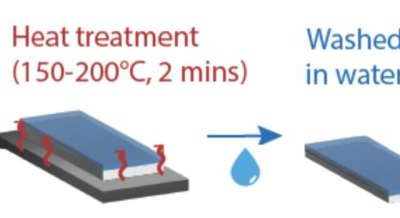Recent technological advances have enabled the development of a wide range of increasingly sophisticated wearable and implantable devices, which can be used to monitor physiological signals or intervene with high precision in therapeutically targeted regions of the...
Electronics & Semiconductors
A new strategy to fabricate highly performing thin-film tin perovskite transistors
Tin-halide perovskites, a class of tin-based materials with a characteristic crystal structure that resembles that of the compound calcium titanate, could be promising alternatives to commonly used semiconductors. Past studies have explored the possibility of using...
Study maps three decades of white LED progress and key innovation drivers
White light-emitting diodes (LEDs), the semiconductor devices underpinning the functioning of countless lighting technologies on the market today, were first released to the public in 1996. Following their commercial debut, these devices have fueled significant...
Passivation technique reduces defects in kesterite solar cells to achieve 11.51% efficiency
Over the past few decades, solar cells have become increasingly widespread, with a growing number of individuals and businesses worldwide now relying on solar energy to power their homes or operations. Energy engineers worldwide have thus been trying to identify...
Using the skin’s electrical conductance to track sweat loss during both physical and mental activities
Over the past decades, electronics engineers have developed a wide range of wearable devices that can be used to track some physiological processes and collect health or fitness-related data. These devices rely on miniature sensors that can pick up different signals,...
New approach reliably integrates 2D semiconductors with dielectrics
Two-dimensional (2D) semiconductor materials could enable the development of smaller yet highly performing electronic components, thus contributing to the advancement of a variety of devices. While significant strides have been made in the synthesis of 2D...
Artificial nerve with organic transistor design shows promise for brain-machine interfaces
Heat-based stabilization of a conductive polymer simplifies bioelectronics fabrication
Recent advances in the field of materials science have opened new possibilities for the fabrication of bioelectronics, devices designed to be worn or implanted in the human body. Bioelectronics can help to track or support the function of organs, tissues and cells,...
A new on-chip microcomb to synchronize signals in optoelectronics
Optoelectronics are promising devices that combine optical components, which operate leveraging light, with electronics, which leverage electrical current. Optoelectronic systems could transmit data faster than conventional electronics, thus opening new possibilities...
Space-time-coding metasurface could transform wireless networks with dual-functionality for 6G era
Programmable metasurfaces (PMs), also sometimes referred to as reconfigurable intelligence surfaces, are smart surfaces that reflect wireless signals, but can also dynamically manipulate electromagnetic waves in real-time. These surfaces are highly advantageous for...










